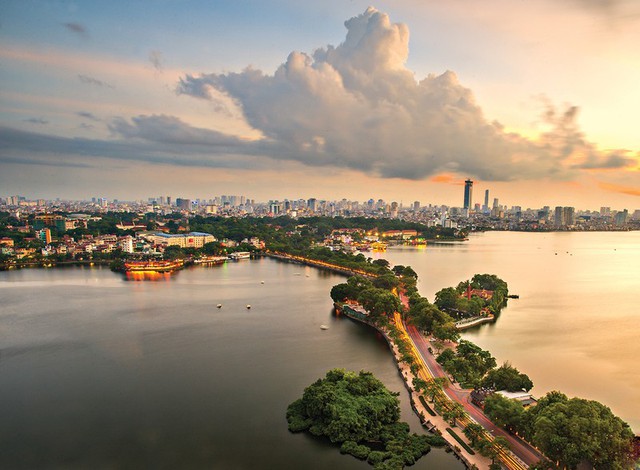Administrative boundary expansion: A boost for tourism development
VGP - The expansion of the administrative boundaries has facilitated the development of tourism in Ha Noi which is planned along the Red River to Ba Vi, My Duc and Ung Hoa districts, said Deputy Director of the Ha Noi Tourism Department to Tran Trung Hieu.

Illustration photo
After the boundary adjustment, the city is home to 136 tourist areas, including 32 recognized as city-level tourist attractions.
In the newly incorporated areas, tours such as resorts, community-based tourism activities or visiting ancient villages have been created.
Many tourist sites have become indispensable for people in the capital during weekends and national holidays, such as Tuan Chau-Quoc Oai Amusement Park, Bao Son Paradise Theme Park, and Vietnam National Village for Ethnic Culture and Tourism.
Tours to cultural-historical relics and handicraft villages have been diversified, such as Duong Lam ancient village, Thay Pagoda, Tay Phuong Pagoda, Bat Trang pottery village, Van Phuc silk village, and Ha Thai Lacquer Village.
Local tourism has grown strongly both qualitatively and quantitatively, which is regarded as the outstanding result of 15 years of administrative expansion.
Tourism has boosted various industries, created jobs, and improved people's lives. In addition, the development of international tourism also helps strengthen and expand economic ties with countries around the world.
Tourism development also creates opportunities for cultural exchange between Ha Noi and regions throughout the country. At the same time, it contributes to the sustainable preservation of local cultural heritage and natural resources. Another benefit of tourism is that more infrastructure has been built in rural areas, preventing migration to urban areas.
Tourism provides career opportunities for local people. They can choose to do business in accommodation, transportation, food, and beverage services in their hometown instead of leaving home to earn a living in a faraway land.
The development of the capital's tourism industry will be based on its inherent potential and advantages while preserving and promoting the cultural, social and unique values of the capital.
The Department of Tourism has been implementing training programs to train professional tourism workers and developing tourism products based on traditional culture as a foundation.
There are many cultural and experiential tours that have proven to be tourist magnets, such as the night tour "Decoding the Imperial Citadel" of the Thang Long Imperial Citadel or "Sacred Night" of the Hoa Lo Prison Relic.
The Department of Tourism will focus on MICE tourism, ecology, resort and healthcare, considering these kinds of tourism breakthroughs besides night tours, food tours and walking street shopping.
In addition, the development of agricultural and rural tourism models on both banks of the Red River will be the focus of Ha Noi's tourism sector.
The Ha Noi People's Committee is determined to build Ha Noi into an "innovative city," a "city of peace," a "civilized, cultured and modern city," and an influential urban center in the Southeast Asian region.
Ha Noi will be in the group of cities with advanced culture, imbued with national identity, home to leading developed cultural industries, owning prestigious and competitive brands and products, and contributing to tourism and export development.
In the first six months of 2023, the total number of tourists to Ha Noi reached 12.33 million, an increase of 42 percent over the same period in 2022, of which the number of international visitors was 2.03 million, while domestic tourists numbered 10.3 million.
It is expected that in 2023, Ha Noi will attract over 22 million tourists (over 3 million international visitors).
By 2030, the income from cultural industries will increase every year and contribute about 8 percent of the GRDP, by 2050, it will be 10 percent or more of the city's GRDP./.

